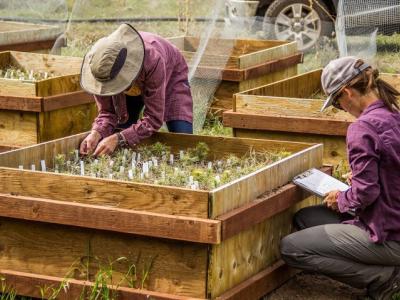You are here
Vision and Mission

Vision Statement
With SEGA we are creating a state-of-the-art multi-field site array to understand how climate impacts the genes of major plant species and interacts with dependent communities and ecosystem processes.
We aim to develop genetics-based solutions to climate change that maintain biodiversity and protect native ecosystems.
Our mission is to enable a new generation of genetics-based climate change research with participants from diverse disciplines.
A particular focus is identifying the physiological mechanisms that underlie differential species and genotype performances under current and future climatic conditions. SEGA research will increase knowledge of fundamental principles governing genotype, as well as biotic and abiotic interactions in a community context.
Plant performance results from SEGA sites will provide modelers with calibration to better predict vegetation shifts, whole community responses to climate changes and the effects of these changes on ecosystem processes. Because the southwestern United States is experiencing some of the highest levels of climate change impacts in North America, SEGA can serve a regional as well as a global role in addressing how genetic- environmental interactions are likely to reshape biotic communities this century.
To accomplish its mission and realize its vision, SEGA activities will include:
- Provision of infra-structure and data management with 10 instrumented experimental gardens and almost real-time accessible environmental and experimental data, as well as remote/wireless control of experimental treatments.
- Participation of researchers, landowners, managers, and policy makers to support dialog and spur progress in innovative research and management.
- Integration of formal and informal education research activities with K-12 institutions, colleges and universities, volunteers, and citizen scientists.
- Increased knowledge of fundamental principles governing genotype by biotic and abotic interactions in a community context, and
- Real solutions to climate change such as the identification of source populations and genotypes that might best survive and thrive in predicted future climates.
Theme by Danetsoft and Danang Probo Sayekti inspired by Maksimer
